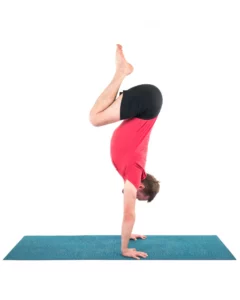Regulate Your Nervous System with Ayurveda

Healthy nervous system regulation is the ability to effectively navigate our emotional response to stressors. When presented with changes in life, someone with healthy regulation can adapt with minimal to no overwhelm or reactivity (e.g., anger outbursts, irritation, worry).
A weaker nervous system regulation often pushes us into a fight (resist) or flight (avoid) mode—churning up a myriad of emotions.
Ayurveda and Nervous System Regulation
Many people don’t know that Ayurveda can help strengthen our nervous system, allowing for a more fluid and healthier response to stressors. Ayurveda does this by offering:
- nutrition guidelines
- lifestyle routines and
- other holistic practices
Together, these practices support the health of our tissues, aid in eliminating toxins, and increase reserves of energy and resilience. We grow healthier, stronger, and more balanced in the face of life’s inevitable ups and downs.
How Does Ayurveda Support the Nervous System?

Digestion is the focal point from which we absorb nutrients. Similarly, elimination (pooping and peeing) is one of the primary ways in which we rid our bodies of unwanted waste and toxins—basic biology stuff.
With optimal digestion and elimination, our body functions as a well-oiled unit and isn’t fighting inflammation or disease. That allows our body to focus on building high-performing healthy tissues while running on ample energy reserves to handle wear and tear.
What is Ojas and How Does it Protect Us?
In Ayurveda, this reserve of energy is called Ojas. Ojas is our sheath in the face of stress and changes in life.
In a low Ojas state, even the smallest changes in life can seem like big disruptions and make us more emotionally reactive. When presented with challenges, our nervous system easily goes into fight-or-flight overdrive and exhibits reactivity in the form of overwhelm, depression, denial, fear, worry, irritation, or anger.
On the other hand, healthier Ojas offer a protective buffer and energy reserve to process and release emotions effectively, thus freeing the nervous system from fight-or-flight overdrive. In that state, we can respond better and adapt to the challenges, thus exhibiting a healthier nervous system regulation.
How to Build Healthy Ojas for Healthier Nervous System Regulation

That answer depends on you as an individual because Ayurveda respects each individual’s unique emotional and physical makeup. That unique constitution determines how our body and mind respond to different nutrition, lifestyle, and holistic therapies. Practices that align with our unique constitution build Ojas, allowing better nervous system regulation. Basically, there’s no one-size-fits-all solution. What works for you might not work for your neighbor.
While the best treatment plans are custom to the individual, there are some generic wellness practices inspired by Ayurveda that can be applied to most scenarios. These practices can enable better nervous system regulation in one of two ways:
- Calming and soothing an overactive nervous system that is anxious, stressed, and reactive
- Stimulating an underactive nervous system that feels dull, lethargic, lazy, and purposeless
How to Soothe an Overactive Nervous System with Ayurveda
- Eat cooked ground foods such as beets, potatoes, carrots, and squash.
- Perform counted belly breaths. Breathe in for 5, hold for 4, and exhale for 7.
- Use calming essential oils such as lavender and chamomile. You can use a diffuser to slowly permeate your living space. If you are new to using essential oils, I advise reading guidelines on safe usage.
- Listen to calming sounds such as a mantra meditation.
How to Stimulate a Lethargic Nervous System with Ayurveda
- Perform the Skull Shining Breath (Kapalabhati). It’s advisable to learn breathing practices (Pranayama) from a knowledgeable yoga teacher to avoid a nervous system imbalance.
- Perform a mantra meditation out loud.
- Use stimulating essential oils such as peppermint and eucalyptus.
Find an Ayurvedic Coach
If you want to go beyond the generic offerings to learn practices for nervous system regulation that are right for your individual makeup, lean into Ayurvedic coaching. Working with an Ayurvedic coach will allow you to dive deep into your individual makeup to design a wellness plan that is custom to you.
Note: The ideas and concepts expressed in this post are not meant to replace medical or mental health advice. If you are struggling with physical or mental health challenges, consult with your relevant medical team.
Also, read...
Fascia and the Vagus Nerve: Healing from the Inside Out
What Your Body Tells You Can Protect You From Stress, Study Suggests
Related courses
Breath as Medicine: Yogic Breathing for Vital Aging
Yoga and Myofascial Release: Releasing Chronic Tension with the Bodymind Ballwork Method
Yoga and Detoxification: Tips for Stimulating Lymphatic Health

Vidushi Sandhir is a 1:1 wellness and personal transformation coach, podcast host, and workshop facilitator. She specializes in heart-centered practices for holistic personal growth and physical wellness. Vidushi worked as a Program Manager in fast-paced Corporate America for over 11 years. A profound sense of dissatisfaction and fatigue prompted her to explore holistic healing and start her coaching practice.
As the Founder of Deeply Simple Wellness, Vidushi coaches through practices that integrate the wisdom of Ayurveda, somatic-informed embodiment techniques, and mindful meditation for a mind-body approach. Her unique approach recognizes that one-size-fits-all solutions have limitations.
She holds a Master’s in Information Systems from Indiana University, Bloomington. Through her years in Corporate America, she committed to continual learning in the field of holistic wellness. She holds a certification in Integrated Trauma Coaching (somatic-informed) from Aura Institute, studied Principles of Ayurvedic Medicine at CA College of Ayurveda, and earned recognition as a Mindfulness Meditation Teacher from the School of Positive Transformation. Additionally, she is a certified Reiki Practitioner from the NYC Reiki Center and has received training as a Life Coach. She also completed Level 1 training in Marma from Bhakti Center.




